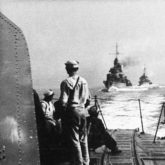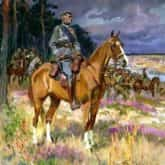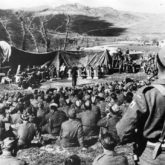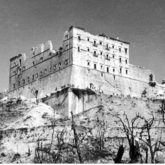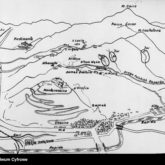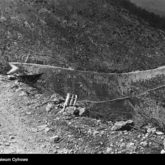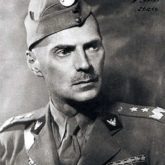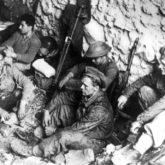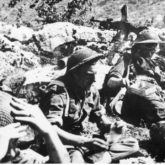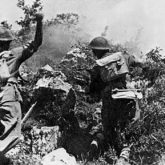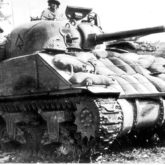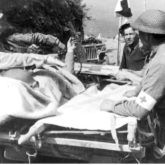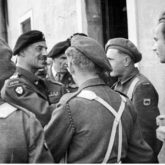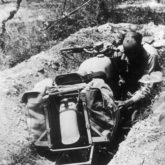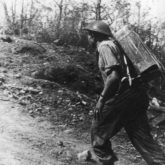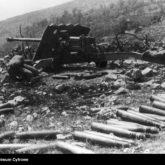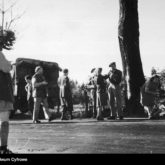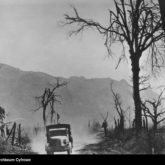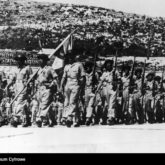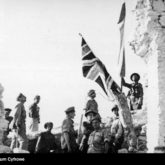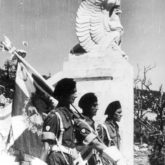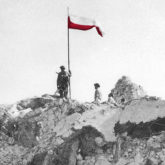„Czerwone maki na Monte Cassino” (Red Poppies on Monte Cassino) – Polish military song referring to the participation of the 2nd Polish Corps in the Battle of Monte Cassino (May 1944). The words were written by the Polish composer and poet Feliks Konarski [1] to music by Alfred Schütz [2]. Monte Cassino and the surrounding hills were a German defensive position in early 1944, closing the Allies’ road to Rome. Between January and May, four bloody battles were fought over these strongpoints. In the last one (11-19 May 1944), the Polish 2nd Corps commanded by General Władysław Anders [3] played a decisive role. It was formed from Polish soldiers evacuated from the Soviet Union in 1942. At Monte Cassino, the Poles tied up the German defence in heavy fighting, which facilitated the Allied attacks and eventually forced the Germans to retreat. The 2nd Polish Corps fought in Italy until the end of the war. Many of its soldiers were later unable to return to Soviet-occupied Poland. After the war, the „Czerwone maki” song enjoyed great popularity in Poland despite communist repression and was unofficially treated as the second national anthem.
Red Poppies on Monte Cassino
Music: Alfred Schütz
Lyrics: Feliks Konarski
Song description
Title: Red Poppies on Monte Cassino
Music: Alfred Schütz
Lyrics: Feliks Konarski
Historical note
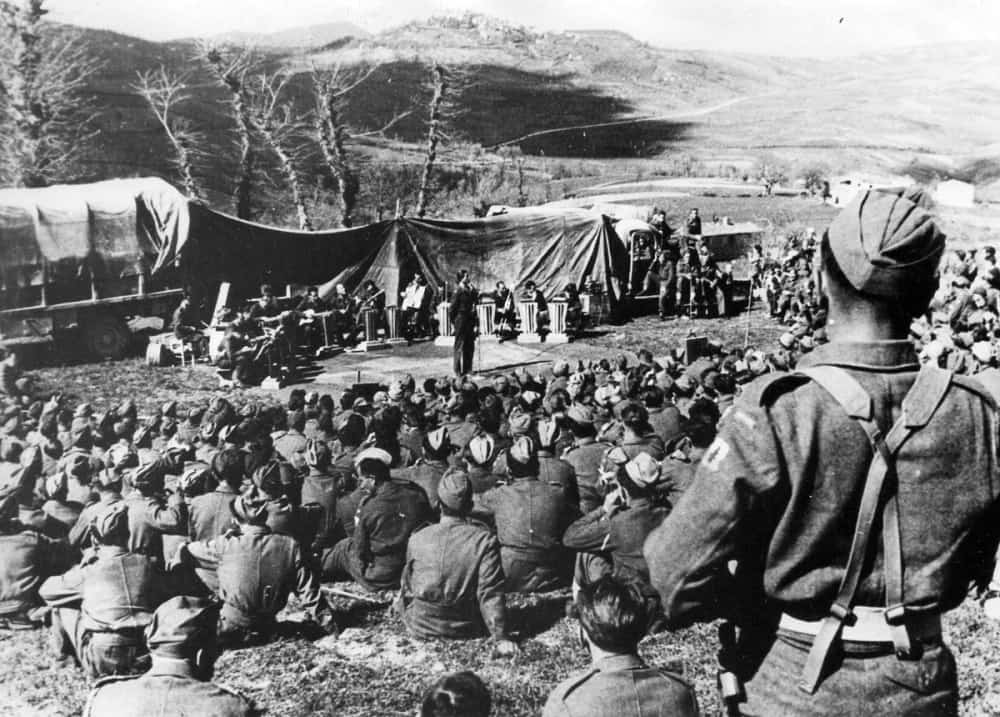
The first performance of the song took place on May 18th, already after the ruins on the monastery have been taken over. The song, with the accompaniment of Schütz’s orchestra, was sung by Gwidon Borucki on that occasion. Konarski later recalled those moments: „Singing Red Poppies for the first time, at the feet of the monastery hill, we all cried. The soldiers cried with us. Red Poppies, which bloomed on that night, became yet another symbol of heroism and sacrifice, as well as a homage of those living to those who, through the love of freedom, perished for the freedom of the people…”. Second stanza has been added by Konarski several hours later, and the third one in 1969, on the 25th anniversary of the battle.
The hill of Monte Cassino (Italy, Central Apennines, Liri river valley between Rome and Naples) became famous already in the time of Medieval Europe thanks to the Benedictine order monastery, which has been founded between 525 and 529 (AD) by Saint Benedict of Nursia. Due to hill’s strategic location on the road leading from the south to Rome, four battles were fought in the area between January and May 1944, later recognized as one of the fiercest episodes of fighting during Second World War. British historian Matthew Parker wrote: „The Battle of Cassino – largest land battle in Europe – was the fiercest and bloodiest of the battles fought between Western allies and the German Wehrmacht on all fronts of the Second World War”. Three consecutive attacks ended with the Allied side’s bloody losses.
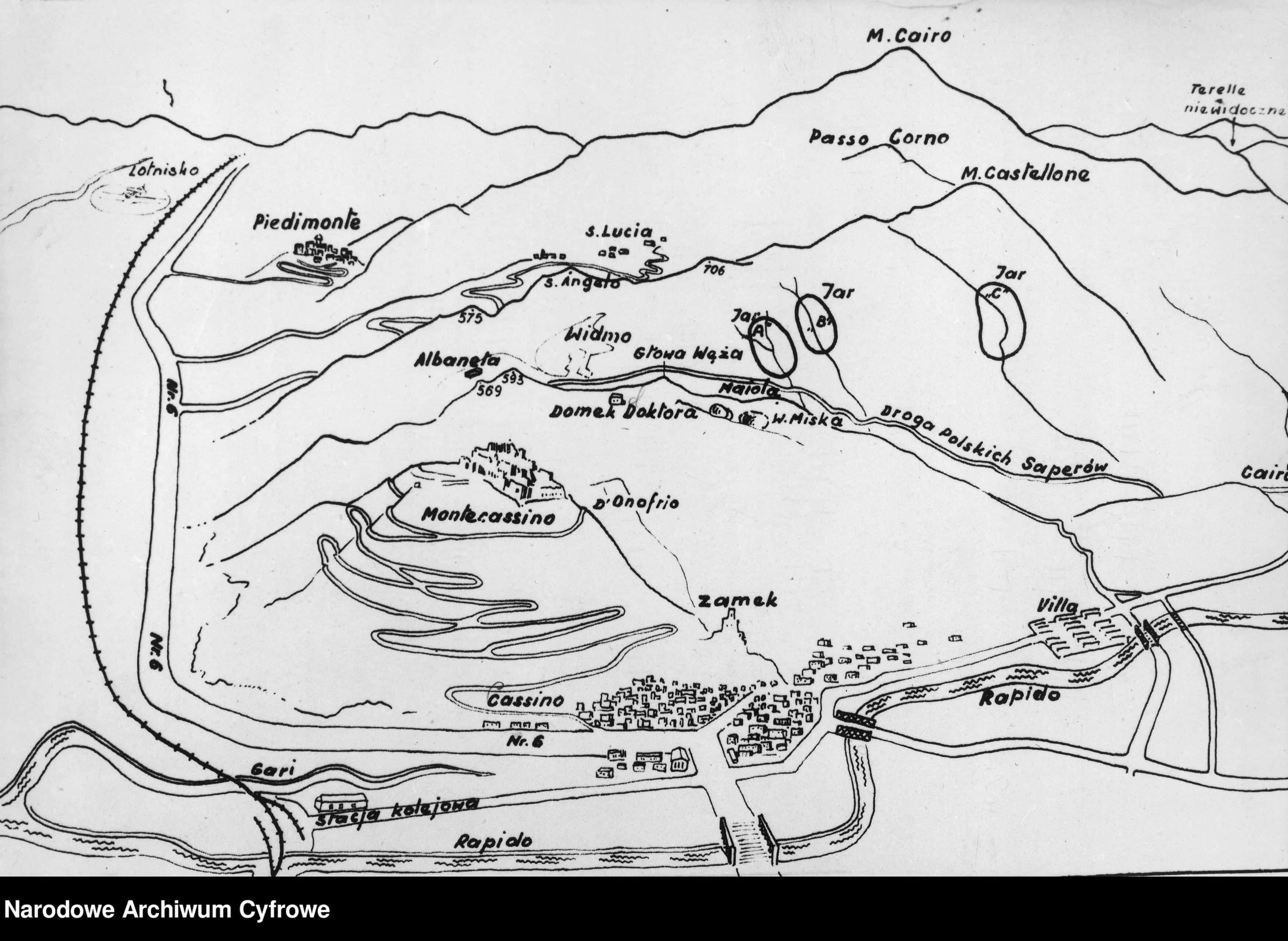
In the final battle – fought between 11 and 19 of May – Second Polish Corps, commanded by General Władysław Anders, played a decisive role. Accepting the proposal for a participation in this battle, he thought that the victory in this clash would be a great success for the Polish cause, drowning out Soviet propaganda according to which „Poles avoid fighting the Germans”.
The operation was given a code name „Honker” („Cry of the Wild Geese”). Polish soldiers were translating this name as „the cry of the geese returning to their homeland”. On May 11th, before the first attack, the commander’s order was read out to the soldiers. Among others, the General reminded in it that the Polish assault would be an act of retaliation for „…the bandit attack of Germans on Poland, for the division of Poland along with the Bolsheviks, for thousands of ruined towns and villages, for the murders and torture of the hundreds of thousands of our sisters and brothers, for the millions of Poles deported as slaves to Germany, for the misery and misfortune of our Country, for our own suffering and wandering, with belief in the justice of the Godly Providence, we walk forward with the sacred motto in our hearts: God, Honour and Homeland”.
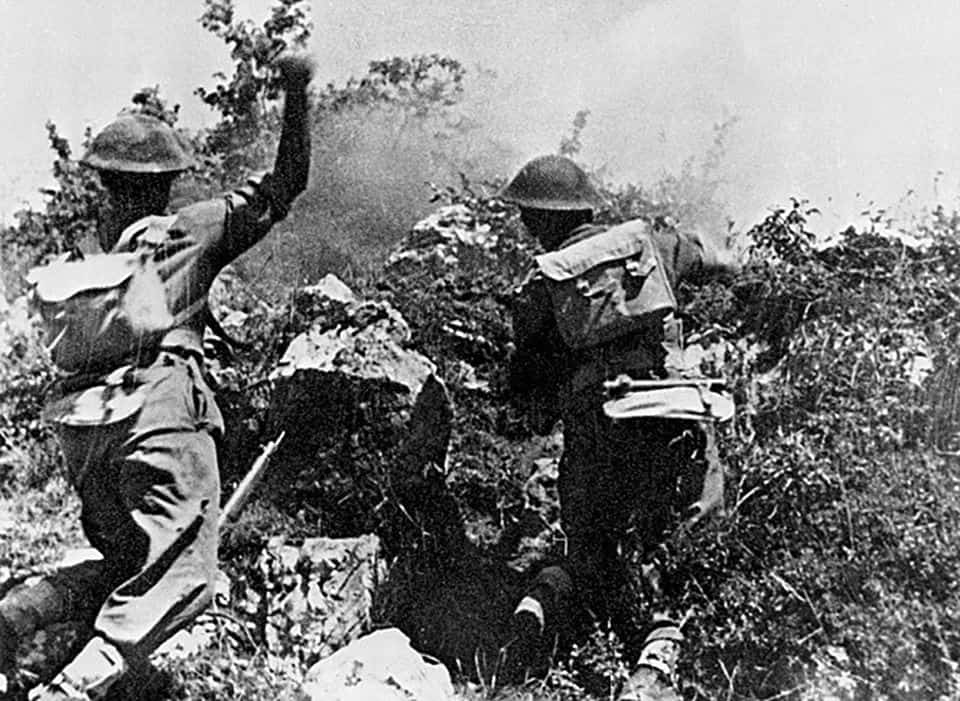
The battle began at 1 A.M. on May 12th. Despite temporary successes, Polish attack, similarly to all earlier assaults, ended with a bloody defeat. Around 2 P.M., General Anders ordered the withdrawal of the fighting troops to their initial positions. The pause has been used to reorganise and supplement human and material losses. Here, it is necessary to emphasize that defending Germans of the 1st Armoured Parachute Division also suffered huge losses on that day. On the other hand, German high command, disoriented with the Polish attack, as related to the main direction of the whole Allied attack, neglected to cover other sections of the fighting zone, thus making possible the successes of the French troops attacking in the Aurunci Mountains and on the banks of Garigliano river. The intense bombardment of the German positions continued for the next few days.
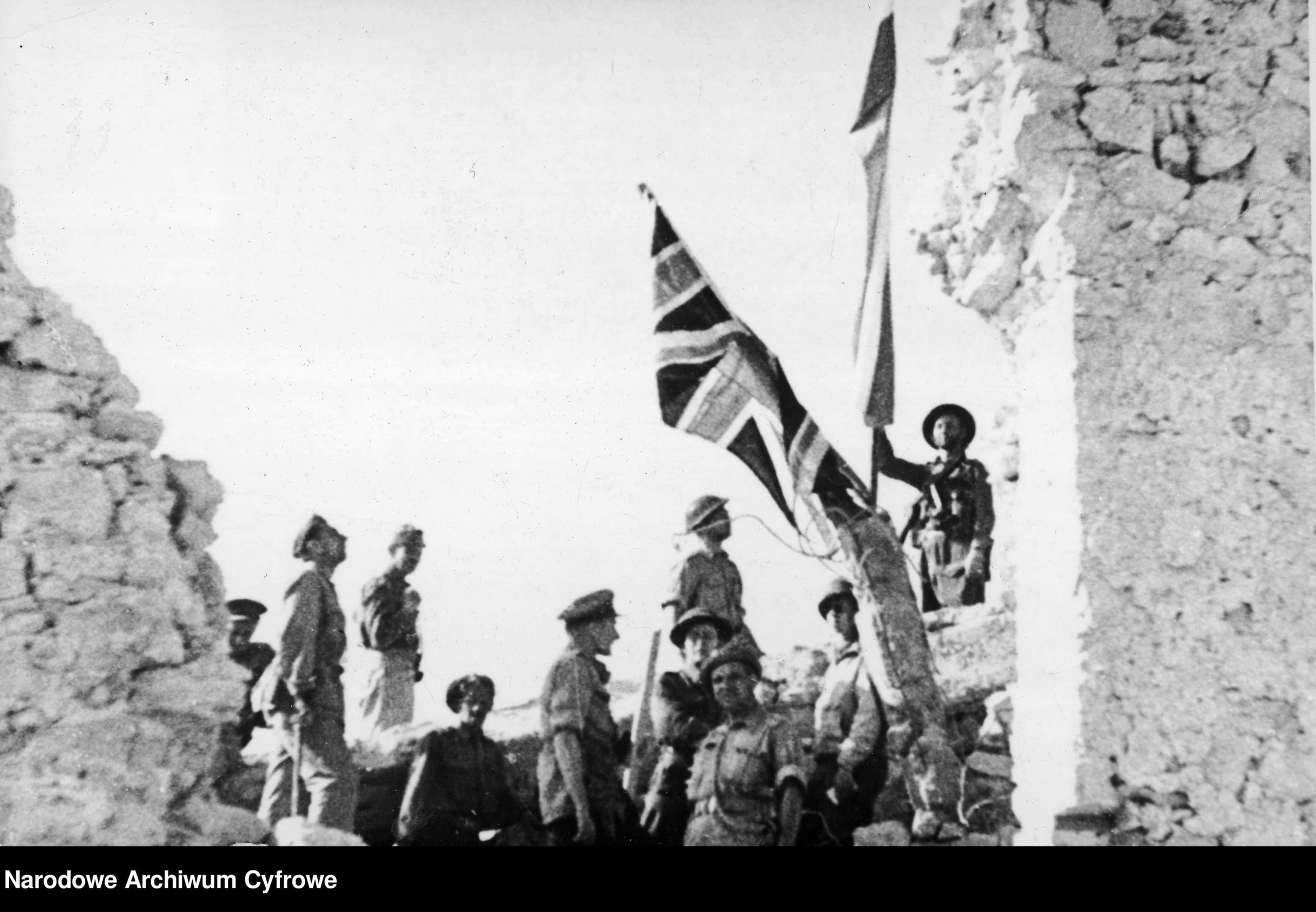
The second Polish attack was launched on May 16th, and it brought long sought-after breakthrough with it. Our troops have conquered and held points „Specter”, „593”, „Monte Castellone”, „Massa Albaneta” and „Colle San Angelo” [4]. Practically, it equalled breaking of the northern edge of the German defensive ring. With the British crossing the confluence of Rapido and Liria rivers, further defence of Monte Cassino by the Germans became impossible. Severely tired and battle-bloodied, German troops left their positions. On 18th of May, patrol unit of the 12th Podolski Cavalry Regiment, under the command of Lieutenant Kazimierz Gurbiel, entered the ruins [5] of the monastery. Our soldiers planted the banner of their regiment on the walls, to be later followed by the Polish flag, thus symbolically emphasizing the Polish participation in the battle. Until May 19th, troops of the 2nd Corps were still conducting cleansing operations.
On the 20th of May, commander of the 15th Army Group General Harold Alexander issued an order to the soldiers of the 2nd Corps, thanking them for their part in the victory: „Soldiers of the 2nd Polish Corps! Were I given the choice among any soldiers which I would like to have under my command, I would certainly choose you, the Poles”.
In the battle of Monte Cassino, the 2nd Polish Corps suffered heavy losses, with 923 dead, 94 declared missing in action, and 2931 soldiers wounded.
Analysis of the text”
The first stanza begins with a reference to the monastery hill (the first performance of the song took place in this setting) that gave name to the battle, and became its symbol. The text is also a reminder of the soldierly duty of avenging Polish losses by means of weapons, of the soldier’s courage, fierceness and honour of the Polish Army. Refrain mentioning „red poppies growing on Polish blood” is a reference to a popular motif appearing in the memoirs of the Battle of Somme (First World War) veterans, who often described Flanders fields of red poppies, bringing the association with the blood of the fallen soldiers to mind. „Red poppies” were also a memory of the flowers that happened to bloom on the hills stormed by Poles during the battle. For the author of the text, they became an eternal symbol of the heroism of Polish soldiers. Second stanza reminds the heavy losses suffered in the battle („Not one of them got hit and fell”). It compares attacks of the Polish infantry to the charge of Polish cavalrymen (Chevaux-Légers) of the 1st Regiment of the Imperial Guard in the Somosierra Gorge (30th November 1808), and the charge of the 2nd Squadron of the II Brigade of the Polish Legions at Rokitna (13th June 1915). During Polish People’s Republic (PRL) period, motiv of Rokitno charge has been replaced with the attack of the peasant scythemen during the Battle of Racławice on April 4th, 1794 (Kościuszko Uprising). Last section of the second stanza creates symbolic depiction of the whole battle; Poles, in contrast to those troops attacking in the earlier waves, were not storming the monastery hill directly. Third stanza opens with an image of the Polish War Cemetery at Monte Cassino („row of white crosses”). The author reminds us of the great price Polish soldiers paid for the victory in the battle, and for this land which for eternity became their own piece of distant Poland to which they walked from an „inhuman land” [6]. The song ends with a reminder that freedom must be paid for with the sacrifice of life and blood.
While the war was still in progress, „Red Poppies” spread among Polish diaspora, ultimately finding its way to occupied Poland. Three months after the battle, New York-based Polish weekly wrote: „Song […] which is being now sung by the entire 2nd Corps, and the one which we would all sing. It’s a song born in the battle, a song that simply says what is felt by everyone, intended for choral singing, a song that is for us today what ‘Rozmaryn’ was yesterday”. In the Stalinist period, due to political reasons, it was officially a banned song, although quite popular one in an unofficial circulation. Over time, „Red Poppies” song has been treated almost like a secondary national anthem. In time of the Polish People’s Republic, it became customary to listen to this song while standing up.
Compiled by Piotr Pacak
Endnotes
[1] Feliks Konarski (1907-1991) – Polish poet, singer, writer, actor, football player.
[2] Alfred Schütz (1910 – 1999) – Polish composer, pianist.
[3] Władysław Anders (1892-1970) – Polish military officer and politician, commander of the 2nd Polish Corps at the Battle of Monte Cassino.
[4] During German counterattack on San Angelo, when Polish soldiers began to break down, Sergeant Marian Czapliński roused his colleagues-in-arms by intoning „Jeszcze Polska nie zginęła”, or „Poland Is Not Yet Lost” (this fact is being mentioned by Melchior Wańkowicz in his book „Monte Cassino”).
[5] The monastery was destroyed on February 16 of 1944 in an air-raid of 256 Allied bombers. The decision to conduct bombardment was taken by New Zealand General Bernard Freyberg, with the approval of General Harold Alexander. This air attack resonated strongly around the world and was widely criticized, also by some of the Allied commanders. It also did not bring any distinct military benefits, as the Germans were able to defend themselves more effectively in the ruins than in the whole intact building.
[6] „Inhuman land” was the name given to the areas of the USSR to which Poles living in the eastern provinces of the Republic of Poland were forcibly deported in the period spanning 1939 and 1941.
 Strona dostępna w języku polskim
Strona dostępna w języku polskim  Website disponível em português
Website disponível em português 